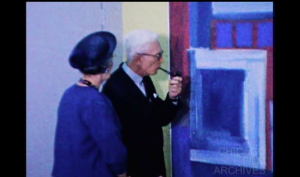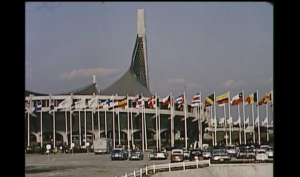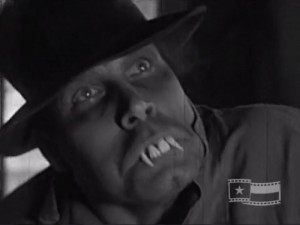"How tomatoes change from blossom to fruit -- Frame by frame shots of tomato blossom giving birth to tomato -- Care of tomato plants." UC San Diego Library.

"An amateur film made by and starring the husband and wife duo, John & Evelyn Kibar. The couple visit an art gallery, where John proclaims he can make art just the same. Title cards with dialogue are dispersed throughout the film." Chicago Film Archives

"The Tokyo Olympics, 1964 takes us to Tokyo and the Olympic games and provides us with a ringside seat for the numerous events that composed this athletic activity. Bad weather cannot be helped in a work of this kind, but the results in this picture did not suffer because of any inclement weather. For cut-aways we see the Emperor of Japan in his box, the smiling faces of the Orientals in the audience, and even an occasional glimpse of the cold drink hustlers charging 50 yen for a bottle of Coca Cola" PSA Journal, Sept. 1965, 51.
"Film features trees and leaves, ducks, water, a statue, 2 women wearing coats, a bridge and some house-like structures. The garden was filmed in the spring/summer and fall" Archives of Ontario.
"Color film of a family picnic and riding in a model T." Church History Library.

"This amateur horror film, made by longtime Austin resident Ramon Galindo, follows a group of kids as they go fishing. When one girl falls and injures herself, she is taken by a Frankenstein-esque villian to an abandoned, rural house where he prepares a potion to give her as she lays on skeleton bones. When the girl makes a run for it, her friends and a sheriff’s officer join in to help rescue the girl and capture the villain. This film was made in 1964 with children from Austin’s Travis Heights neighborhood. Austin local Chris Crow plays the villain and commissioned the music for the film locally. It was shot in Hays County between Kyle and San Marcos, Texas" Texas Archive of the Moving Image.
"Under Sheltering Skies reminds us that the Africa of today will not exist much longer because of the many forces of change working against it. Poaches are attacking the abundant wild life, and the civilization is remolding village huts and village life. Here, then, is a look at the Africa today from the village to the wild life sanctuary where wild animals still roam. Flawless photography gives this film a unique charm and judicious cutting lets us see only the finest shots of numerous animals still roaming "under sheltering skies" PSA Journal, Sept. 1964, 50.
"This is a superb film about the Strategic Air Command and shows us how the SAC is constantly ready to strike and destroy an aggressor anywhere in the world. The purpose of the film, to quote directly from the sound track: "Is to show you the power of the hand (that controls the nuclear bomb release in modern jet bomber) and how it protects those who desire peace and freedom." Specifically, this is the story of the six men who man a B-52 all-jet bomber nicknamed "Ready 11", and how it would carry out an order to strike and obliterate an enemy target anywhere in the world. The B-52 can launch supersonic missiles that are accurate and deadly, and the launching scenes and those showing the missile following its course until it hits its target are as outstanding as any in the film. Most of the photography was taken around Mather Air Force Base near Sacramento, Calif. Dr. Franklin states he spent four years making the film, and it required two years of letter writing to get permission to ride in military plans as civilian to get the footage he wanted. He had to pass a physical examination, become familiar with oxygen equipment, and learn ejection procedures. Classified material presented a problem, also, and it required an additional year and a half to obtain Air Force approval of the footage used in the final film" PSA Journal, Sept. 1964, 50.
"The Cinch is a quick, cute comedy about a do-it-yourselfer who decides to fix his own TV set. He fixes more than the set and ends up in quite a fix himself. The film won the Most Humorous Film Award. It is sharply cut and the fast pacing gives it its punch and humor" PSA Journal, Sept. 1964, 50.
Total Pages: 299